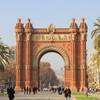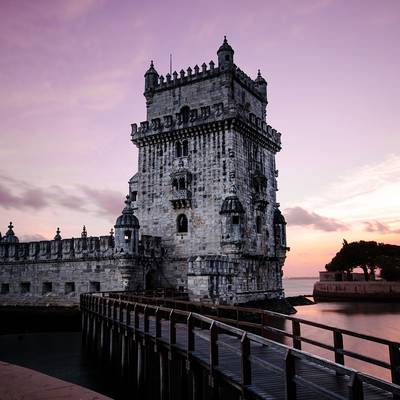General
Transport
People
Accomodation
Food & Drink
Sightseeing
 What to do in Spain?
What to do in Spain?
 Are there any festivals in Spain?
Are there any festivals in Spain?
 What are the best tours to take in Spain?
What are the best tours to take in Spain?
 What are the best beaches in Spain?
What are the best beaches in Spain?
 Are Madrid and Barcelona city cards worth buying?
Are Madrid and Barcelona city cards worth buying?
 Which museums in Madrid offer free entry?
Which museums in Madrid offer free entry?
 What should I know about surfing in Spain?
What should I know about surfing in Spain?
Legal
Money
Safety & Health
Family travel

What to see in Spain?
From the breathtaking Mediterranean coastline to the mountainous Basque country, Spain offers amazing landscapes, history, cuisine, and architecture at every turn.
The Royal Alcazar in Seville. The capital of Spain’s southern Andalusia region, Seville is known for its beauty and culture. With its Moorish (Muslim-Iberian) cultural influence, the region is a melting pot of medieval architecture and amazing history. To that end, Seville is perhaps most famous for its Royal Palace. The Royal Alcázar (palace/fortress) was first built in the early 8th century and is one of the world’s oldest palaces still in use. It has been expanded numerous times throughout history and is still an official residence of the Spanish royal family.
Malasaña: The coolest neighborhood in Madrid. Madrid’s Malasaña neighborhood is packed with diverse culture and rich history. Prior to the death of dictator Francisco Franco, it was the center of Spain’s counterculture movement for democracy. Today, it’s Madrid’s hippest neighborhood, full of chic boutiques, hip bars, and vintage shops. This is the place where everyone wants to be seen. Check out fun street art or taste the best tapas in Madrid at the swanky El Puerto de Cabreira.
La Sagrada Família in Barcelona. While you’re in Barcelona, you have to check out La Sagrada Família – the iconic Gaudi-designed basilica that’s been under construction since the late 1800s. This stunning Roman Catholic church was designed to “mimic nature” and was built without any straight lines. La Sagrada is famous for its tree-like columns and its famous “melting” facade.
The ruins of Medina Azahara in Cordoba. In the beautiful Andalusian town of Cordoba, you’ll find the ruins of the Palace of Medina Azahara – one of the newest UNESCO World Heritage Sites. This palace-city was built between 940 and 975 CE by the Moors, but was attacked and destroyed just a few decades later. The good news for history buffs is the site was rediscovered at the turn of the twentieth century; archeologists have excavated about 10% of it. Just imagine what it might have looked like in the height of the great Western Islamic civilization of Al-Andalus!
The Alhambra in Grenada. And speaking of Al-Andalus, you absolutely can’t miss The Alhambra. Perched in the hills of Granada, this gorgeous palace-fortress protected the city's inhabitants from invasion by the Christians during the last of the Spanish Muslim dynasties. They must have gotten it right because Grenada was the last city to fall during the Spanish Crusades. Today, it’s hard to find a more picturesque site in the world, given The Alhambra’s beautiful gardens and stunning architecture.
Lekeitio in Basque Country. Lekeitio is a sleepy fishing village in Spain’s autonomous Basque Country. Each summer, the town honors San Pedro (St. Peter), the patron saint of fishermen, by taking to the streets with a lively celebration. After the fiesta through Lekeitio’s historic streets, head to the local beaches for an amazing seafood dinner and to sip sagardoa, a fermented cider loved by the locals.
Old Town in Cáceres. If you head to the Extremadura region in southwest Spain, you’ll find a thrilling frontier that hugs the border with Portugal. While the region’s natural wonders are beautiful, you have to check out the distinctly medieval Old Town section of Cáceres. This city is a UNESCO Heritage site, and its mix of Roman, Moorish, and Italian Renaissance architecture reflects its storied past. Additionally, many battles between Moors and Christians were fought here during the Reconquista.
Rustic towns in the Pyrenees. In these majestic mountains, you’ll find stunning landscapes, rustic towns, and one-of-a-kind culture. Since the villages here were so remote for so many centuries, there’s a ton of unique stuff to do, see, and eat. One of the best ways to see the Pyrenees is on a bike. Try one of the many cycling tours that wind through beautiful Basque Country and charming Catalonia. The Pyrenees also offer great hiking trails where you can explore fascinating medieval towns, and ancient castles along the way.
The Camino de Santiago. The Camino de Santiago is a soul-inspiring 500-mile-long pilgrimage trail that follows the footsteps of the Apostle St. James. Stretching from France across northern Spain, the trek ends at the tomb of St. James (Santiago in Spanish) in the Cathedral of Santiago de Compostela. You can walk any part of this revered road, but we’d recommend having a local trip planner add the most picturesque parts to your custom itinerary.
The city of Toledo. Toledo is a unique city where diverse cultures have historically lived in harmony – but it’s steel that’s really made Todelo famous. For centuries, the best swords on the planet were made here. Since the advent of firearms though, Toledo’s fabled steelsmiths have switched to making a replica and ceremonial weapons. Make sure to pass through at least a couple of artisan steel workshops – especially that of Mariano Zamorano, thought to be one of the best steelsmiths in the world.
Sigüenza. If you want to feel like a real Spaniard, head to the central city of Sigüenzato buy a bota: a leather wine bottle that’s perfect for carrying around some amazing Rioja. For the real deal, buy the black version. It will set you back about 30 EUR, but you won’t be mistaken for a tourist lugging around a cheaper copy. Once you’ve filled your bota with some Spanish red, just squirt the wine into your mouth as you walk the trails of the Barranco del Río Dulce Natural Park or take it with you on one of the many wine tours found all over Spain.

What should I know about surfing in Spain?

Do people in Spain speak English?

Where to buy alcohol in Spain and how much does it cost?

Is there a coffee and tea culture in Spain?

What are the best tours to take in Spain?
